Residents who fled deadly Maui fire ask for time to grieve and slower rebuild

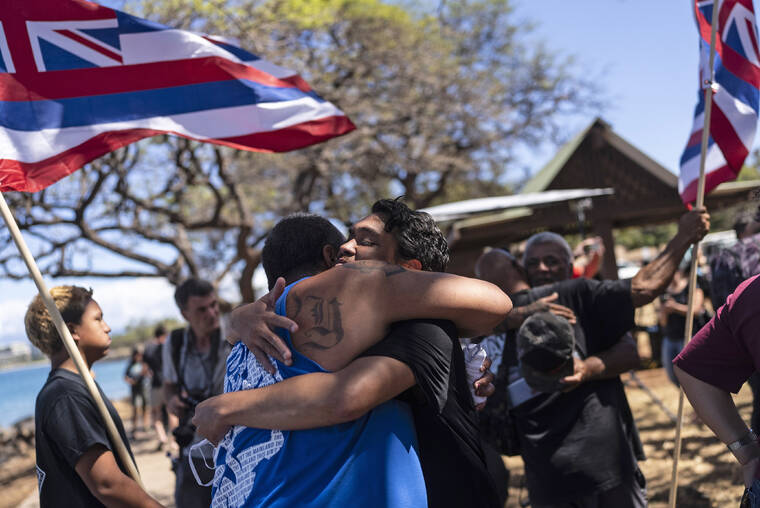
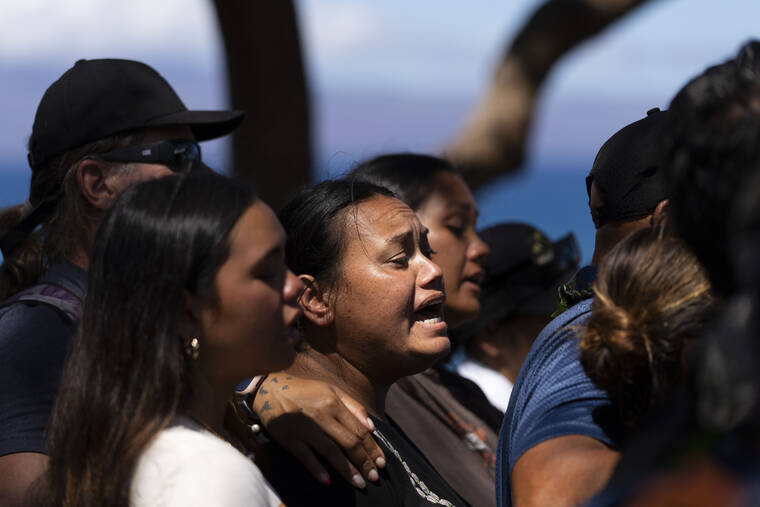
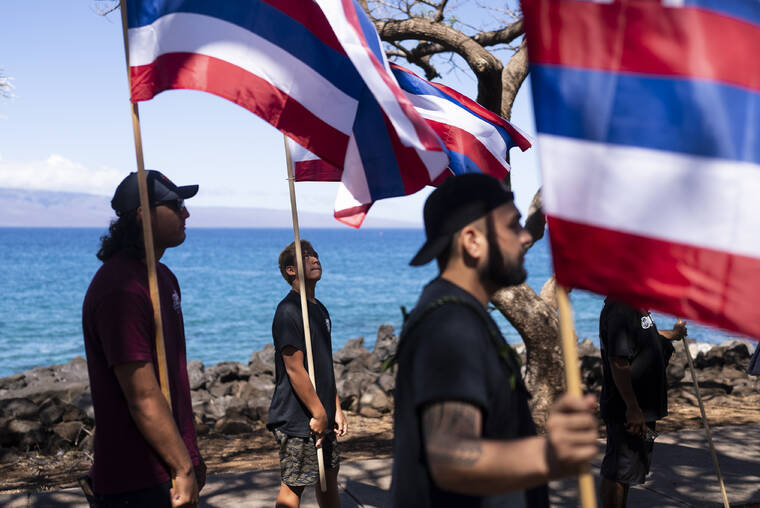
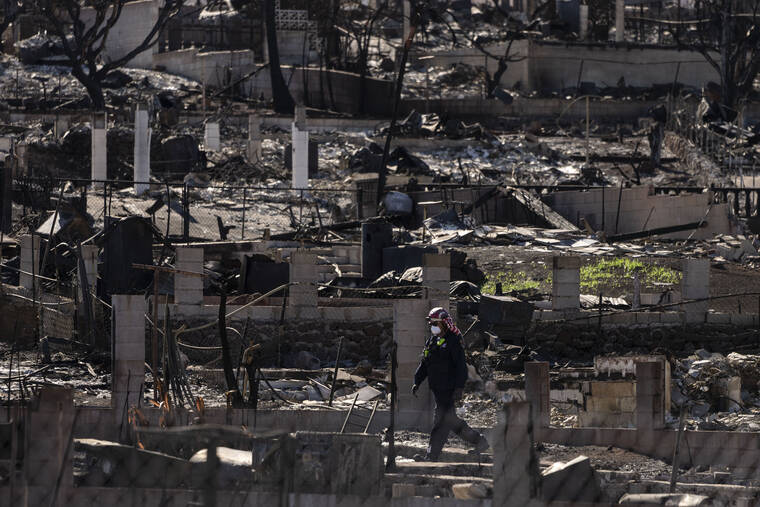
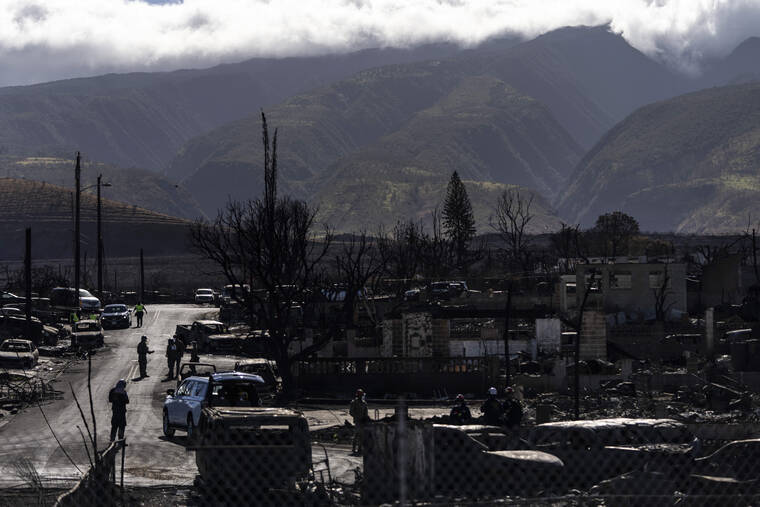
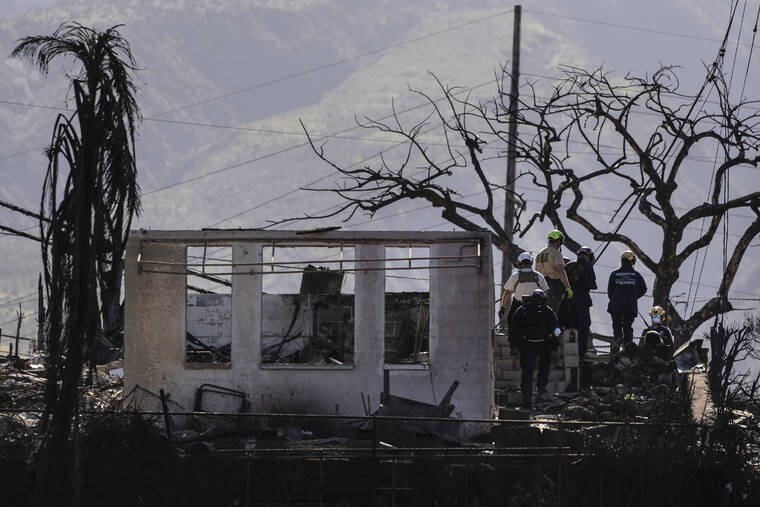
LAHAINA, Hawai‘i — Native Hawaiians and others from a Maui community devastated by ferocious fire said Friday they worry Hawaii’s governor is moving too quickly to rebuild what was lost while the grief is still raw.
“The fire occurred only 10 days ago, and many people are still in shock and mourning,” Tiare Lawrence, who grew up in Lahaina, said at an emotional news conference organized by community activists. They called on Gov. Josh Green to give residents time to grieve, provide community leaders with recovery decision-making roles and comply with open-records laws amid distrust in government response to the disaster.
The governor and his wife were scheduled to provide a livestreamed address from Honolulu on Friday evening with updates on the response to the Maui wildfires that killed at least 111 people. Earlier this week, he said he would announce details of a moratorium on land transactions in Lahaina to prevent people from falling victim to land grabs.
Since the flames consumed much of Lahaina, locals have feared a rebuilt town could become even more oriented toward wealthy visitors.
Green has said Lahaina’s future will be determined by its people, but didn’t immediately respond to a request for comment on the group’s concerns.
“The governor should not rush to rebuild the community without first giving people time to heal, especially without including the community itself in the planning,” she said. “Fast-track development cannot come at the cost of community control.”
More than a dozen of Lawrence’s uncles and cousins fled the fast-moving fire last week and went east to her Pukalani home.
The coalition of activists, under the umbrella of a group calling itself “Na Ohana o Lele: Lahaina,” were especially concerned about the impact of development to the environment and noted how mismanagement of resources — particularly land and water — contributed to the quick spread of the fire.
There was no word Friday on who would replace the Maui Emergency Management Agency administrator who abruptly resigned after defending a decision not to sound outdoor sirens during the fire.
Herman Andaya had said this week that he had no regrets about not deploying the system because he feared it could have caused people to go “mauka,” a Hawaiian term that can mean toward the mountains or inland.
“If that was the case, then they would have gone into the fire,” Andaya explained. He stepped down Thursday, a day later.
The decision to not use the sirens, coupled with water shortages that hampered firefighters and an escape route clogged with vehicles that were overrun by flames, has brought intense criticism from many residents following the deadliest wildfire in the U.S. in more than a century.
While crews sifted through ashes and rubble in Lahaina, scenes of normalcy continued in other parts of Maui, even if the tragedy hung heavy over the island.
Off the coast of Kihei Friday morning, a holiday marking Hawaii’s statehood, paddlers in outrigger canoes glided through Maalaea Bay about 20 miles (32 kilometers) south of Lahaina. Fishermen cast their lines from knee-deep water. And beachgoers strolled along the sand.
The search for the missing moved beyond the devastated town of Lahaina to other communities that were destroyed. Teams had covered about 58% of the Lahaina area and the fire was 90% contained as of Thursday night, Maui County officials said.
Six forensic anthropologists with the Department of Defense POW/MIA Accounting Agency are assisting in gathering and identifying human remains, the Pentagon said in a statement Friday. The group is experienced in verifying DNA from long-lost service members, many of whom died as long ago as World War II.
Mayor Richard Bissen accepted Andaya’s resignation effective immediately, the county said. Andaya cited unspecified health reasons for leaving his post, with no further details provided.
The lack of sirens has emerged as a potential misstep, part of a series of communication issues that added to the chaos, according to reporting by The Associated Press.
Hawaii has what it touts as the largest system of outdoor alert sirens in the world, created after a 1946 tsunami that killed more than 150 on the Big Island. Its website says they may be used to alert for fires.
On Wednesday, Andaya vigorously defended his qualifications for the job, which he had held since 2017. He said he was not appointed but had been vetted, took a civil service exam and was interviewed by seasoned emergency managers.
Andaya said he had previously been deputy director of the Maui County Department of Housing and Human Concerns and chief of staff for former Maui County Mayor Alan Arakawa for 11 years. During that time, he said, he often reported to “emergency operations centers” and participated in numerous trainings.
“So to say that I’m not qualified I think is incorrect,” he said.
Arakawa, who noted Andaya was scrutinized for the job by the county’s personnel service, said he was disappointed by the resignation “because now we’re out one person who is really qualified.”
“He was trying to be strong and trying to do the job,” Arakawa said about the wildfire response. “He was very, very heartbroken about all the things that happened.”
Hawaii Attorney General Anne Lopez said earlier Thursday that an outside organization will conduct “an impartial, independent” review of the government’s response.
Corrine Hussey Nobriga said it was hard to lay blame for a tragedy that took everyone by surprise, even if some of her neighbors raised questions about the absence of sirens and inadequate evacuation routes.
The fire moved quickly through her neighborhood, though her home was spared.
“One minute we saw the fire over there,” she said, pointing toward faraway hills, “and the next minute it’s consuming all these houses.”
Authorities hope to empty crowded, uncomfortable group shelters by early next week, said Brad Kieserman, vice president for disaster operations with the American Red Cross. Hotels also are available for eligible evacuees who have spent the last eight days sleeping in cars or camping in parking lots, he said.
Contracts with the hotels will last for at least seven months but could easily be extended, he said. Service providers at the properties will offer meals, counseling, financial assistance and other disaster aid.
The governor has said at least 1,000 hotel rooms will be set aside. In addition, Airbnb said its nonprofit wing will provide properties for 1,000 people.
Ernesto and Adoracion Garcia, who moved from the Philippines a decade ago, joined a dozen other relatives in two time-share apartments at the Hyatt Regency in Kaanapali after being left homeless by the fire.
They were thankful that they would no longer be staying at shelters, after fleeing the flames.
They recalled taking photos and videos of the fire, but soon realized it was headed their way. By the time they got into their car, a nearby church had burned down and the fire was just three homes away from theirs.
Ernesto Garcia, 79, a cashier at a parking lot, said he tried to stay calm.
“If you panic you can’t think very well,” he said.
His wife Adoracion Garcia, 78, said there was little time to grab belongings but managed to fill two small suitcases with a few clothes.
The cause of the wildfires is under investigation. But Hawaii is increasingly at risk from disasters, with wildfire rising fastest, according to an AP analysis of FEMA records.
———
Kelleher reported from Honolulu and Weber from Los Angeles. Contributing to this report were Associated Press journalists Michael Casey in Concord, New Hampshire; Jennifer McDermott in Providence, Rhode Island; Seth Borenstein in Washington, D.C.; and Heather Hollingsworth in Kansas City, Missouri.
———
Associated Press climate and environmental coverage receives support from several private foundations. See more about AP’s climate initiative here. The AP is solely responsible for all content.
